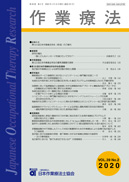Volume 39, Issue 2
Displaying 1-16 of 16 articles from this issue
- |<
- <
- 1
- >
- >|
FOREWORD
-
2020Volume 39Issue 2 Pages 131
Published: April 15, 2020
Released on J-STAGE: April 15, 2020
Download PDF (159K)
CONTRIBUTION
-
2020Volume 39Issue 2 Pages 133-135
Published: April 15, 2020
Released on J-STAGE: April 15, 2020
Download PDF (453K)
LECTURES
-
2020Volume 39Issue 2 Pages 136-141
Published: April 15, 2020
Released on J-STAGE: April 15, 2020
Download PDF (989K)
RESEARCH ARTICLES
-
2020Volume 39Issue 2 Pages 142-152
Published: April 15, 2020
Released on J-STAGE: April 15, 2020
Download PDF (636K) -
2020Volume 39Issue 2 Pages 153-161
Published: April 15, 2020
Released on J-STAGE: April 15, 2020
Download PDF (1330K) -
2020Volume 39Issue 2 Pages 162-169
Published: April 15, 2020
Released on J-STAGE: April 15, 2020
Download PDF (394K) -
2020Volume 39Issue 2 Pages 170-179
Published: April 15, 2020
Released on J-STAGE: April 15, 2020
Download PDF (965K) -
2020Volume 39Issue 2 Pages 180-189
Published: April 15, 2020
Released on J-STAGE: April 15, 2020
Download PDF (744K) -
2020Volume 39Issue 2 Pages 190-201
Published: April 15, 2020
Released on J-STAGE: April 15, 2020
Download PDF (909K) -
2020Volume 39Issue 2 Pages 202-209
Published: April 15, 2020
Released on J-STAGE: April 15, 2020
Download PDF (335K)
PRACTICAL REPORTS
-
2020Volume 39Issue 2 Pages 210-216
Published: April 15, 2020
Released on J-STAGE: April 15, 2020
Download PDF (682K) -
2020Volume 39Issue 2 Pages 217-222
Published: April 15, 2020
Released on J-STAGE: April 15, 2020
Download PDF (521K) -
2020Volume 39Issue 2 Pages 223-230
Published: April 15, 2020
Released on J-STAGE: April 15, 2020
Download PDF (1084K) -
2020Volume 39Issue 2 Pages 231-238
Published: April 15, 2020
Released on J-STAGE: April 15, 2020
Download PDF (780K) -
2020Volume 39Issue 2 Pages 239-247
Published: April 15, 2020
Released on J-STAGE: April 15, 2020
Download PDF (492K) -
2020Volume 39Issue 2 Pages 248-254
Published: April 15, 2020
Released on J-STAGE: April 15, 2020
Download PDF (482K)
- |<
- <
- 1
- >
- >|
